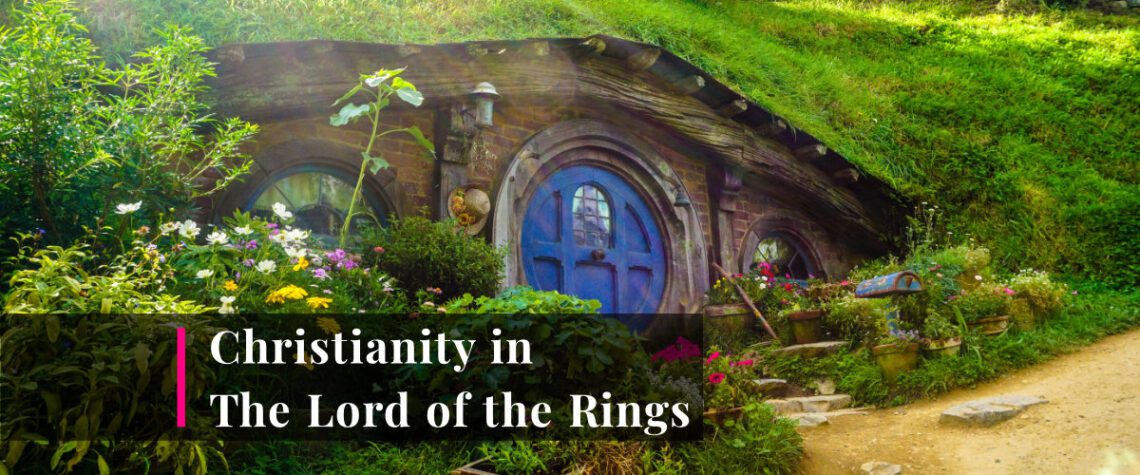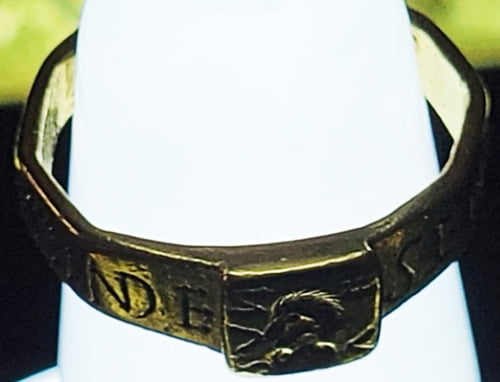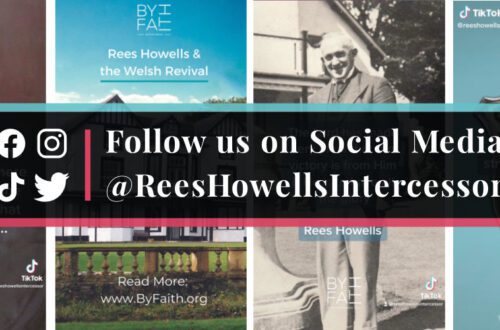
Christianity in The Lord of the Rings, J.R.R. Tolkien and The Bible
The Ring that Inspired The Lord of the Rings
In 1785, a farmer was ploughing a field near the ruins of the Roman town of Calleva Atrebatum, England, and he unearthed a 5th century Roman ring, fashioned out of 12 grams of gold, with a diameter of 25 millimetres. It contained a cryptic message and another ancient object found nearby described the missing ring as cursed.
One very beautiful thing, very beautiful, very wonderful. He had a ring, a golden ring, a precious ring
– Gollum’s cave, Bilbo Baggins, The Hobbit

144 years later, the archaeologist Sir Mortimer Wheeler asked the Professor of Anglo-Saxon at Oxford for help. J.R.R Tolkien therefore studied the ring and found a Latin inscription declaring, “Senicianus Live Well in God.” For Senicianus, Christ represents the Lord of the Ring.
Two years later, Tolkien wrote a story about a hobbit and a ring of power and recently, I was able to inspect this ‘ring of power.’
As I studied it, I found VENVS is inscribed on the ring. By combining Christian ideas with Venus, some early Christians secretly shared their faith and their hope in God’s love (Venus) to avoid persecution.
“I will make you like a signet ring; for I have chosen you,’ says the Lord of hosts
– Haggai 2:23
J.R.R. Tolkien and C.S. Lewis
In the First World War, a young J.R.R. Tolkien and his close friend C.S. Lewis were fighting evil on different fronts, facing the horror of an all-out war. Both knew what war meant and the terror of watching close friends suffer and die. In the end, Tolkien and Lewis were fighting for the Shire, the green and pleasant land of England. It was this reality that Tolkien sowed into his epic masterpiece, The Lord of the Rings trilogy.
But in the end, it’s only a passing thing, this shadow; even darkness must pass
– Samwise, The Two Towers, The Lord of the Rings, by J.R.R Tolkien
Tolkien was a devout Christian, religious thinker and author of The Lord of the Rings and its prequel, The Hobbit. He described his epic trilogy as a “fundamentally religious and Catholic work.” Tolkien treasured references in Old English and Middle English to ancient stories and myths, and delved into ‘the thin places’ of Nordic language treasure. The successful film trilogy that flowed from his books borrows from the Pre-Raphaelite imagery in John Duncan’s 1911, painting Riders of the Sidhe.
Courage is found in unlikely places
— Gildor, The Return of the King, The Lord of the Rings, by J.R.R Tolkien
Christian Themes in The Lord of the Rings
Christian themes such as darkness and light, mercy and justice, fellowship, authority, repentance, free will and sacrifice are found throughout Tolkien’s epic. The biblical offices of prophet, priest and king are found in major characters, Gandalf, Frodo and Aragorn. The hobbits dwell in the idealised peace of the Shire and the Anduin Vale, but are tasked with moving out of their comfort zones, to defend their peaceful world. Samwise, Merry and Pippin represent the normal Christian living out his or her quiet life, one who feels small and insignificant, and yet is called to the immense task to fight evil.
You can trust us to stick with you through thick and thin — to the bitter end. And you can trust us to keep any secret of yours — closer than you keep it yourself. But you cannot trust us to let you face trouble alone, and go off without a word. We are your friends, Frodo
– Merry, The Fellowship of the Ring, The Lord of the Rings, by J.R.R Tolkien
The Characters in The Lord of the Rings and their Biblical Inspiration
Frodo is the unconventionally called. He’s the believer who is satisfied to live a quiet, unknown life but is tasked with bearing the burden of the One Ring to Mordor. As he approaches Mount Doom, the burden of his call makes him a shell of himself, but he has committed himself to do whatever it takes to fulfil his duty. He is an example of redemptive suffering. He suffers so the world can live.
It is useless to meet revenge with revenge: it will heal nothing
– Frodo, The Return of the King, The Lord of the Rings, by J.R.R Tolkien
Samwise is Jonathan to David. The best friend a man can have. A selfless source of strength and devotion, willing to suffer wrong for the good of others, to think of himself last and to see and strike out at evil. He is the archetypal Christian.
There’s some good in this world, Mr. Frodo…and it’s worth fighting for
– Samwise, The Two Towers, The Lord of the Rings, by J.R.R Tolkien
Gandalf is like an Old Testament prophet or guardian angel. His role is to support, guide and strengthen, but he’s no Saviour. He is no Aslan in Narnia, a Christ-like person. Gandalf the Grey stands against evil, “You shall not pass,” and falls from the mountains of Moria. Like Elijah returning from the mountain of death, Gandalf returns from his ‘death,’ renewed as Gandalf the White (1 Kings 19:1-21). He has been to his mount of transfiguration and shines like Moses, and the Lord. Tolkien conducts thoughts of the resurrection of Christ but doesn’t portray Gandalf as a Saviour.
All we have to decide is what to do with the time that is given us
– Gandalf, The Fellowship of the Ring, The Lord of the Rings, by J.R.R Tolkien
The ring of power and gold in the Hobbit represents temptation for Tolkien. Jesus was promised all the kingdoms of this world if he worshipped Satan, but Jesus did not come for the gold, silver, power, influence and prestige of the world, but for its redemption. The one ring in the Lord of the Rings and the gold in the Hobbit are under Satan’s power. Resisting the temptation to surrender our soul for the temporal is the key to life. Your soul is worth more than money, possessions, power and your place in the hierarchy of this system. If you give in to the ring of temptation, it will ruin you and all around you. Merely ask the celebrities in rehab.
The hobbits are the called of God. We feel small, simple and stupid before the exceptional people of this world. But only Frodo Baggins, Samwise and their friends can fulfil the task. God has a purpose for you that only you can fulfil. He chooses the simple to shame the wise.
All that is gold does not glitter, not all those who wander are lost
– Bilbo, The Fellowship of the Ring, The Lord of the Rings, by J.R.R Tolkien
Bilbo Baggins is the treasury of the promise of peace. In the Lord of the Rings, he is like St John, the aged. He has fought his battles and is handing the responsibility of battle to another generation. Bilbo was the one who kept the ring from evil for decades. In the Lord of the Rings, he is the steward of the peace. It’s not enough to win the battle, you must secure peace after. He keeps possession of the One Ring for sixty years, and yet by resisting temptation he has become one of the strongest, most mature hobbits. With his grand adventure in The Hobbit complete, he feels drawn to a journey from which he will never return. When tempted to seize the ring back, he reveals his incredible will and character over six decades.
It’s a dangerous business, Frodo, going out your door. You step onto the road, and if you don’t keep your feet, there’s no knowing where you might be swept off to
– Bilbo, The Fellowship of the Ring, The Lord of the Rings, by J.R.R Tolkien
Sauron, Saruman, the Orcs, and Wormtongue represent the evil amongst us. Sauron is a fallen angel, the chief demon of his age. Saruman is the fallen prophet who turns to evil. The Orcs are devils and Wormtongue is the false prophet. They teach us evil is real and evil is a choice.
For nothing is evil in the beginning. Even Sauron was not so
– Elrond, The Fellowship of the Ring, The Lord of the Rings, by J.R.R Tolkien
In this world there’s a Satan at work, demons tempting people and people who submit to this evil. They will obliterate everything unless we fight. Think of Nazism, the atheism of the Soviet Union and the woke mutilators of our time, destroying our Christian values, people’s bodies and our culture, as they return to Paganism, in the name of progress.
A day may come when the courage of men fails when we forsake our friends and break all bonds of fellowship. But it is not this day
– Aragorn, The Return of the King, The Lord of the Rings, by J.R.R Tolkien
Sméagol is the hobbit who gives in to all temptation and allows sin to devastate him. Before he was called Gollum, Sméagol was a Stoor, a type of hobbit. Sin will make you unrecognisable and strip all goodness from you. Hitler started as a man and became the embodiment of evil.
I would rather spend one lifetime with you, than face all the ages of this world alone
– Arwen, The Fellowship of the Ring, The Lord of the Rings, by J.R.R Tolkien
The women of Lord of the Rings represent many characters from Scripture. Galadriel is similar to an angel in white, who can be tempted to fall, but chooses to be a guide to all that is good. Arwen is another angelic-styled character, who chooses mortality for love. Christ also descended from the immortal to the mortal, out of His love for humanity.
Maybe the paths that you each shall tread are already laid before your feet, though you do not see them
– Lady Galadriel, The Fellowship of the Ring, The Lord of the Rings, by J.R.R Tolkien
Rosie Cotton from the Shire is the promise of home. All that is good is regained in the promise of a future with Rosie. She is all everyone is fighting for – the promise of a peaceful, happy, prosperous home, back in the Shire. Each woman contains part of the truth of Mary the mother of Jesus and Mary who found Jesus’ tomb empty.
So his heart and the heart of his people were moved as the trees of the woods are moved with the wind
– Isaiah 7:2
- Historic Christian Authors and Pioneers of Faith
- Christianity and Culture
- Christianity and Art
- Christian Book Reviews
- Recent Articles
By Paul Backholer. Find out about Paul’s books here.




